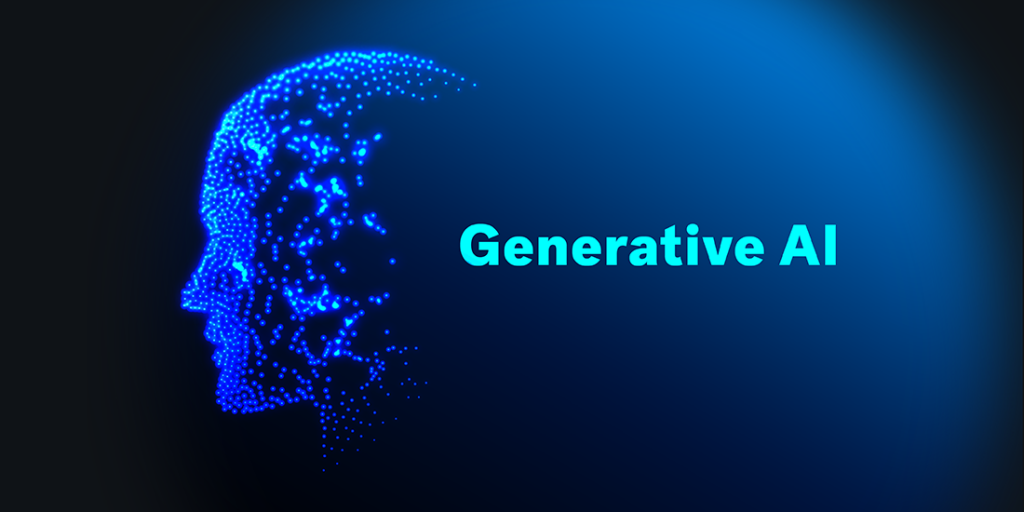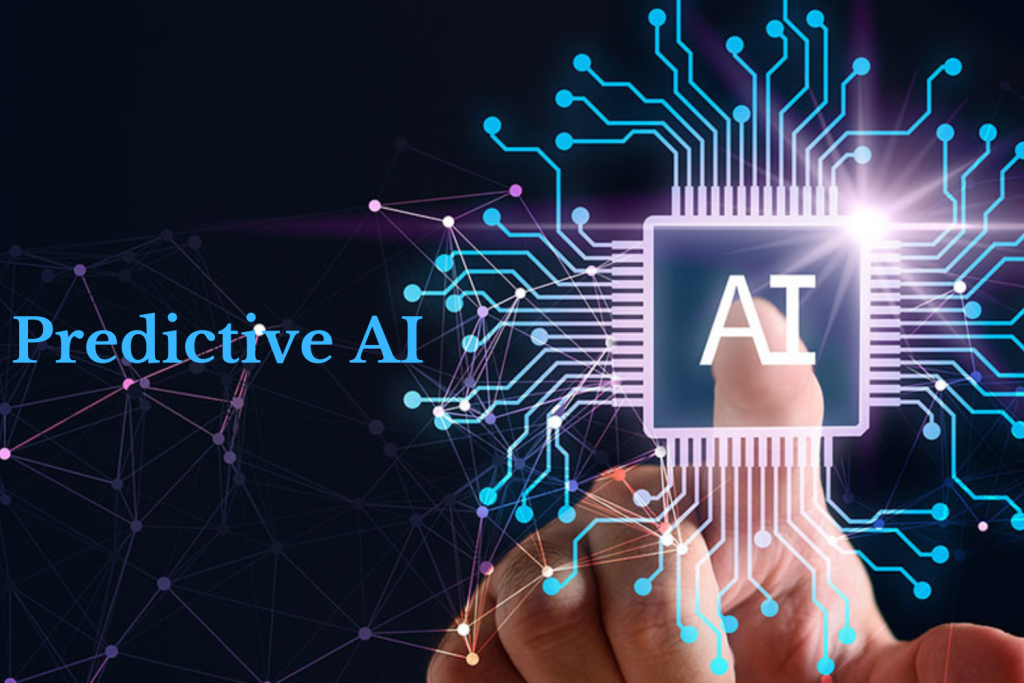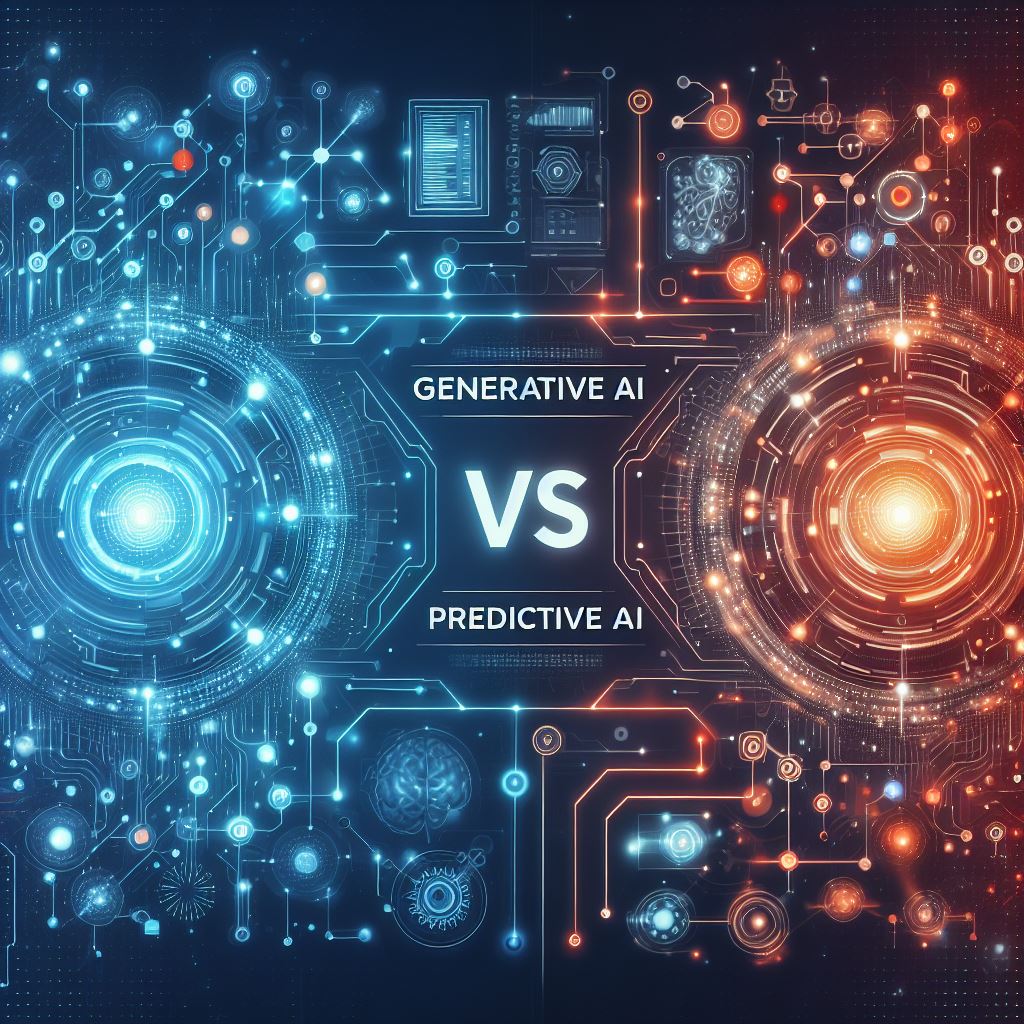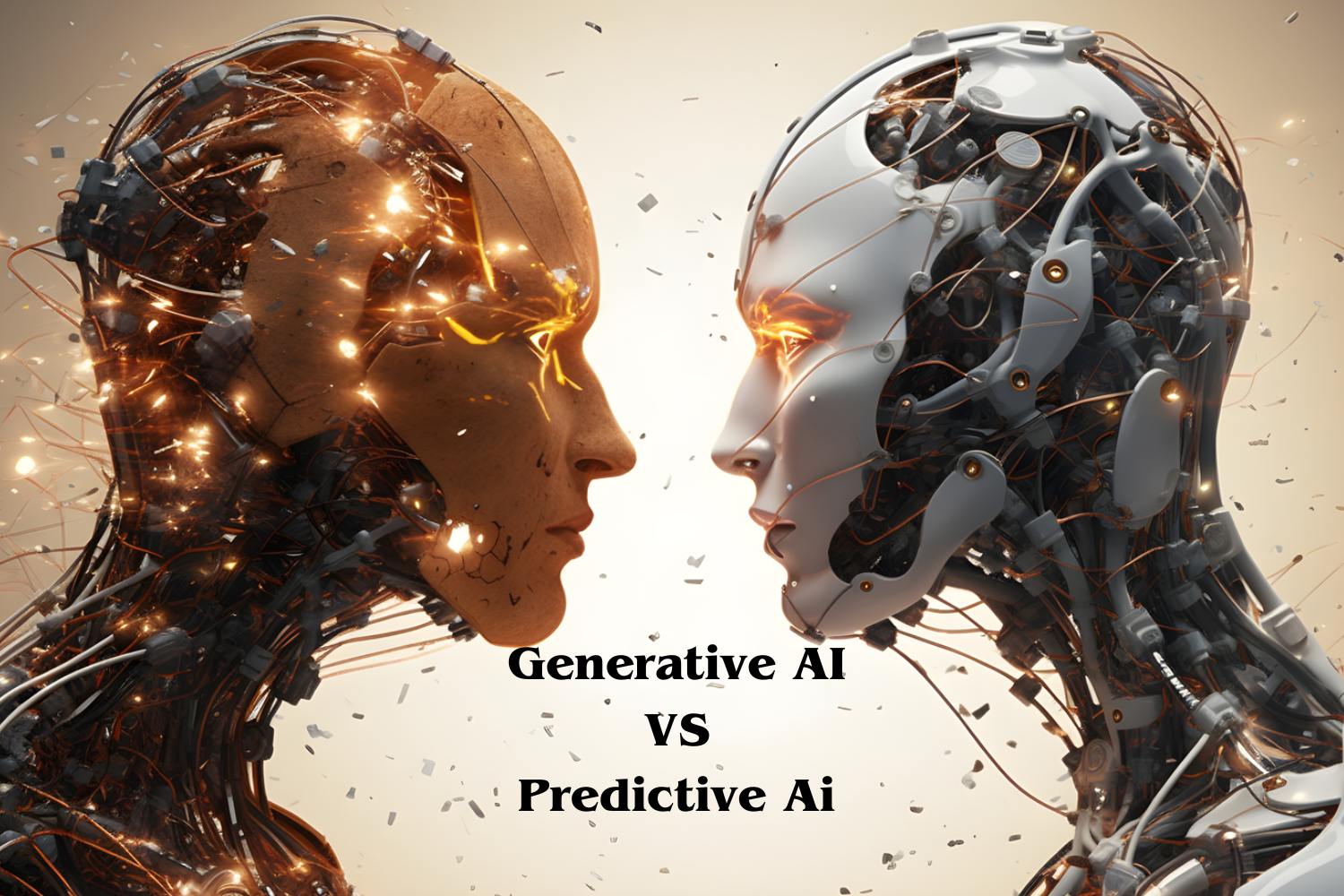Generative AI vs Predictive AI
In the rapidly evolving landscape of artificial intelligence (AI), two prominent branches stand out: Generative AI and Predictive AI. These two approaches, while sharing some similarities, serve distinct purposes and employ different methodologies. Understanding their differences and applications is crucial for harnessing the full potential of AI in various domains. In this extensive exploration, we go into the details of Generative AI vs. Predictive AI, uncovering their functionalities, methodologies, applications, and the profound implications they hold for the future of technology and society.
Table of Contents
Understanding Generative AI:
Generative AI includes a class of algorithms designed to generate new content or data that resembles the input it was trained on. Unlike traditional rule-based systems, generative models have the remarkable ability to create novel outputs by learning the underlying structure and characteristics of the data. Among the notable techniques within Generative AI is Generative Adversarial Networks (GANs), where two neural networks, the generator, and the discriminator, engage in a competitive learning process to produce realistic outputs.

The realm of Generative AI is marked by innovation and creativity, finding applications across diverse domains. In the realm of art and design, generative models are revolutionizing creative expression, enabling artists and designers to explore new frontiers and push the boundaries of imagination. Whether it’s generating lifelike images, composing music, or designing virtual worlds, generative algorithms are reshaping the creative process and challenging conventional notions of human-machine collaboration.
Beyond the realms of art and creativity, Generative AI holds immense promise in scientific research and innovation. In fields such as drug discovery, materials science, and computational biology, generative algorithms are accelerating the pace of discovery by generating novel molecular structures with desired properties. By simulating molecular interactions and exploring huge chemical space, generative models are opening new avenues for drug design, material synthesis, and bioengineering.
Exploring Predictive AI:
Predictive AI, in contrast, focuses on forecasting future outcomes or behaviors based on historical data and patterns. It encompasses various algorithms, including regression analysis, time series forecasting, and machine learning models such as decision trees and support vector machines. Predictive AI leverages statistical techniques and machine learning algorithms to analyze data, identify patterns, and make predictions about future events or trends.

The applications of Predictive AI span across various industries and domains, driving decision-making processes and enabling organizations to anticipate and mitigate risks. In finance, predictive models play a crucial role in stock market forecasting, risk management, and algorithmic trading. By analyzing market data and identifying patterns, predictive algorithms help traders and investors make informed decisions and capitalize on market trends.
In healthcare, predictive analytics is transforming patient care and clinical decision-making. Predictive models aid in disease diagnosis, treatment planning, and patient monitoring, enabling healthcare providers to identify high-risk patients, personalize treatment regimens, and improve health outcomes. Moreover, in manufacturing and supply chain management, predictive algorithms optimize production processes, forecast demand, and streamline logistics operations, thereby enhancing efficiency and reducing costs.
Key Differences: Generative AI vs Predictive AI
While Generative AI and Predictive AI share the overarching goal of leveraging data to make informed decisions, they differ significantly in their approaches and objectives. Generative AI focuses on creating new content or data that resembles the input it was trained on, whereas Predictive AI aims to forecast future outcomes or behaviors based on historical data and patterns.

Generative AI operates in an unsupervised or semi-supervised manner, where the model learns to generate outputs without explicit guidance on the desired outcome. In contrast, Predictive AI typically involves supervised learning, where the model is trained on labeled data to predict specific outcomes or classes.
Moreover, Generative AI often involves complex neural network architectures such as GANs, Variational Autoencoders (VAEs), and Transformers. In contrast, Predictive
AI encompasses a broader range of algorithms, including regression, classification, and clustering techniques.
Applications and Use Cases: Generative AI vs Predictive AI
Generative AI and Predictive AI have diverse applications across various industries and domains, driving innovation and transformation. Generative AI is revolutionizing creative fields such as art, music, and design, empowering artists and creators to unleash their imagination and explore new avenues of expression. From generating lifelike images to composing music and designing virtual environments, generative algorithms are pushing the boundaries of creativity and human-machine collaboration.
Predictive AI, on the other hand, powers decision-making processes in industries such as finance, healthcare, marketing, and manufacturing. In finance, predictive models are used for stock market forecasting, risk management, and fraud detection. In healthcare, predictive analytics aids in disease diagnosis, treatment planning, and patient monitoring. Similarly, in marketing, predictive algorithms help businesses anticipate customer behavior, personalize marketing campaigns, and optimize resource allocation.
Challenges and Ethical Considerations:
Despite their immense potential, Generative AI and Predictive AI also pose significant challenges and ethical considerations. Generative models raise concerns about the authenticity and misuse of generated content, including deepfakes, misinformation, and copyright infringement. The proliferation of deepfake technology, in particular, has raised alarms about its potential to deceive and manipulate individuals and undermine trust in media and information sources.

Moreover, biases present in the training data can manifest in the generated outputs of generative models, leading to ethical dilemmas and societal implications. Whether reinforcing stereotypes, perpetuating misinformation, or distorting historical facts, the unintended consequences of generative algorithms underscore the importance of ethical considerations and responsible AI development.
Predictive AI algorithms face challenges related to data quality, interpretability, and fairness. Biases in historical data can perpetuate inequities and discrimination in predictive outcomes, exacerbating existing societal inequalities. Moreover, the opacity of complex predictive models raises questions about accountability, transparency, and the potential for algorithmic bias.
The Future of AI:
As Generative AI and Predictive AI continue to advance, their convergence holds the promise of even more powerful AI systems capable of both creating and predicting. This symbiotic relationship between generative and predictive approaches could unlock new possibilities across diverse domains, from personalized medicine and autonomous vehicles to creative augmentation and human-computer interaction.
However, realizing this vision requires addressing the technical, ethical, and societal challenges associated with AI development and deployment. Collaborative efforts involving researchers, policymakers, industry stakeholders, and civil society are essential to ensure that AI technologies are developed and used responsibly for the benefit of humanity.
Conclusion:
In conclusion, Generative AI and Predictive AI represent two distinct yet complementary approaches to harnessing the power of artificial intelligence. While Generative AI focuses on creating new content or data, Predictive AI aims to forecast future outcomes or behaviors based on historical data and patterns. Both approaches have diverse applications across various industries and domains, shaping the future of technology and society.
By understanding the nuances of Generative AI vs. Predictive AI and addressing the associated challenges and ethical considerations, we can harness the full potential of AI to drive innovation, solve complex problems, and create a better future for all. As we navigate the landscape of AI, let us strive for responsible development and deployment to ensure that AI technologies serve the common good and uphold the values of fairness, transparency, and inclusivity. Together, we can forge a future where AI enhances human capabilities, fosters creativity, and empowers individuals and communities to thrive in a rapidly changing world.

